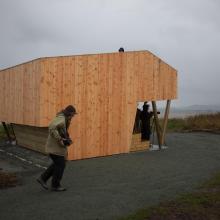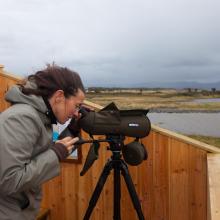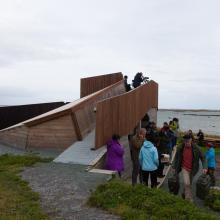


Ørland Wetland System
- Country:Norway
- Site number:310
- Area:3,168 ha
- Designation date:24-07-1985
- Coordinates:63°40'N 09°28'E
Materials presented on this website, particularly maps and territorial information, are as-is and as-available based on available data and do not imply the expression of any opinion whatsoever on the part of the Secretariat of the Ramsar Convention concerning the legal status of any country, territory, city or area, or of its authorities, or concerning the delimitation of its frontiers or boundaries.
Overview
The Site is a complex of four separate areas – Grandefjæra, Hovsfjæra, Innstrandfjæra and Kråkvågsvaet – which form part of a large system of shallow marine waters, intertidal zones and mudflats. The intertidal area features salt-tolerant vegetation, with some nationally endangered species such as the Northern marsh orchid (Dactylorhiza purpurella) present. Due to its location on the flyway for birds migrating along the Norwegian coast to and from their breeding locations in Greenland, Svalbard, Iceland and Siberia, the Site is the most important wetland system in central Norway for resting and feeding migratory waterbirds, especially ducks and waders. Generally, high numbers of species such as the red knot (Calidris canutus), the curlew sandpiper (Calidris ferruginea), the common snipe (Gallinago gallinago), the Eurasian wigeon (Mareca penelope), the mallard (Anas platyrhynchos), mew gull (Larus canus) and the snow bunting (Plectrophenax nivalis) are present. The nationally threatened harbour seal (Phoca vitulina) also regularly visits, while the European Otter (Lutra lutra) breeds here. Human activities have included drainage for agricultural purposes, but strict regulations now prevent construction, hunting and drainage. The Site is used for fishing, birdwatching, sheep grazing and small-scale seaweed cutting. It has some value in shoreline stabilization. The species composition of the soft seabed is potentially threatened from run-off from farming and agriculture. The permitted cutting of seaweed is thought to have a negative effect on avian food sources.
Administrative region:
Trøndelag
- National legal designation:
- Bird Sanctuary - Hovsfjæra
- Bird Sanctuary - Innstrandfjæra
- Bird Sanctuary - Kråkvågsvaet
- nature reserve - Grandefjæra
- Last publication date:23-06-2023
Downloads
Ramsar Information Sheet (RIS)
Site map
Additional reports and documents
- Site management plan
- Other published literature
